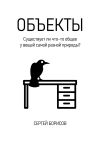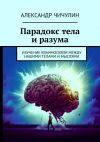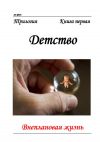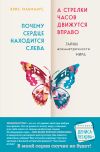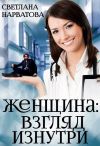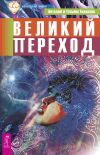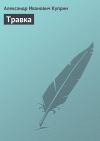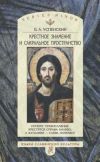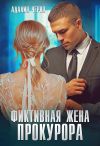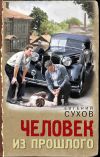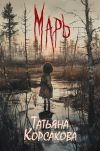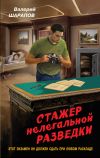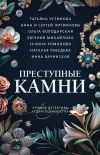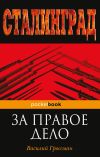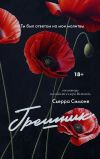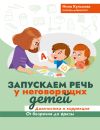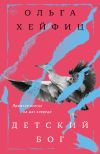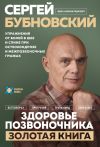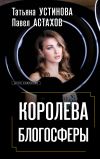Текст книги "История тела. 2640 фактов"
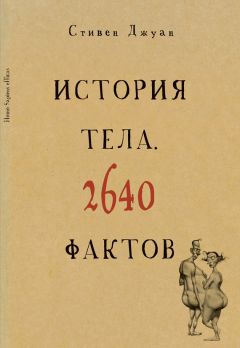
Автор книги: Стивен Джуан
Жанр: Зарубежная образовательная литература, Наука и Образование
Возрастные ограничения: +12
сообщить о неприемлемом содержимом
Текущая страница: 46 (всего у книги 48 страниц)
Источники II

Глава 1. Рождение
1. Juan S. What is the probability of human life existing on other planets? // National Post (Toronto). 12 December 2005. Body & Health. Р. 1.
2. Leeuw R., Cuttini M., Nadai M., Berbik I., Hansen G., Kucinskas A., Lenoir S., Levin A., Persson J., Rebagliato M., Reid M., Schroell M. and Vonderweid U. Treatment choices for extremely preterm infants: An international perspective // Journal of Pediatrics. 2000. Vol. 137. No. 5. P. 608–615.
3. Janus L. The Enduring Effects of the Prenatal Experience. New Jersey: Jason Aronson, Northvale. 1997.
4. Доктор Франс Вельдман – неонатолог, глава Международного центра исследований и развития гапономии во Франции.
5. Veldman F. Confirming affectivity, the dawn of human life //International journal of Prenatal and Perinatal Psychology and Medicine. 1994. Vol. 6. No. 1. P. 11–26.
6. Интервью, 15 июля 1999.
7. Интервью, 16 июля 1999.
8. Juan S. Talking to the unborn // Sun-Herald (Sydney). 27 June 1999. Tempo. P. 9.
9. Juan S. Hello in there //New York Daily News. 26 January 2005. Body Work. P. 2.
10. Gustafson M. and Donahoe P. Male sex determination: Current concepts of male sexual differentiation // Annual Review of Medicine. 1994. Vol. 45. P 505–524.
11. Montagu A. The Natural Superiority of Women (3rd ed.). N. Y.: Collier Books. 1997. P. 80.
12. Gissler M., Jarvelin M., Louhiala P. and Hemminki E. Boys have more health problems in childhood than girls: Follow-up of the 1987 Finnish Birth Cohort // Acta Paediatrica. 1999. Vol. 88. No. 3. P 310–340.
13. Robbins M. Nature, nurture, and core gender identity //Journal of the American Psychoanalytic Association. 1996. Vol. 44 (suppl.). P 93—117.
14. Juan S. Why it is so for males // Sun-Herald (Sydney). 25 July
1999. Tempo. P 16.
15. Интервью, 30 августа 2005.
16. Sadler T. Langman’s Medical Embryology. Philadelphia: Lip-pincott Williams & Wilkins. 2004.
17. Juan S. Is it possible for twins to have different fathers? National Post (Toronto). 15 August 2005. Body & Health. P 2.
18. Juan S. Who was the world’s tiniest baby? National Post (Toronto). 15 August 2005. Body & Health. P 2.
19. Griengl H. Delusional pregnancy in a patient with primary sterility //Journal of Psychosomatic Obstetrics and Gynaecology.
2000. Vol. 21. No. 1. P 57–59.
20. Masoni S., Maio A., Trimarchi G., Punzio C. de and Fioretti P The couvade syndrome // Journal of Psychosomatic Obstetrics and Gynaecology. 1994. Vol. 15. No. 3. P 125–131.
21. Storey A., Walsh C., Quinton R. and Wynne-Edwards K. Hormonal correlates of paternal responsiveness: New and expectant fathers // Evolution and Human Behavior. 2000. Vol. 21. No. 2. P. 79–95.
22. Field T., Hernandez-Reif M. and Freedman J. Stimulation programs for preterm infants // Social Policy Report (Society for Research in Child Development). 2004. Vol. 28. No. 1. P. 3–19.
23. Field T. Massage improves disorders // Brown University Child and Adolescent Behavior Letter. December 1995. P. 1–2.
24. Juan S. Rubbed the right way // Sun-Herald (Sydney). 2 July 2000. Tempo. P. 14.
25. Zackrisson M. Brat pain // New Scientist. 6 July 1996. P. 65.
26. Juan S. When a baby cries… // Sydney’s Child. February 2001. P. 38.
27. St James-Roberts I. and Menon-Johansson P. Predicting infant crying from fetal movement data: An exploratory study // Early Human Development. 1999. Vol. 54. No. 1. P. 55–62.
28. DeBellis M., Keshavan M., Clark D., Casey B., Giedd J., Boring A., Frustaci K. and Ryan N. Developmental traumatology. Part II: Brain development (A.E. Bennett Research Award) // Biological Psychiatry. 1999. Vol. 45. No. 10. P. 1271–1284.
29. Teicher M., Dumont N., Ito Y., Vaituzis C., Giedd J. and Andersen
S. Childhood neglect is associated with reduced corpus callosum area // Biological Psychiatry. 2004. Vol. 56. No. 2. P. 80–85.
30. Juan S. Getting newborns to sleep peacefully // National Post (Toronto). 25 April 2005. Body & Health. P. 1.
31. Anderson G., Moore E., Hepworth J. and Bergman N. Early skin-to-skin contact for mothers and their healthy newborn infants // Cochrane Database of Systematic Reviews. 2003. Vol. 2. CD003519.
32. Juan S. Is skin-to-skin contact good for my newborn? // National Post (Toronto). 25 April 2005. Body & Health. P. 1.
33. Taddio A., Shah V., Gilbert-MacLeod С. and Katz J. Conditioning and hyperalgesia in newborns exposed to repeated heel lances // Journal of the American Medical Association. 2002. Vol. 288. No. 7. P 857–861.
34. Juan S. Can newborn babies anticipate pain? // National Post (Toronto). 24 October 2005. Body & Health. P. 2.
35. Salk L., Lipsitt L., Sturner W., Reilly B. and Levat R. Relationship of maternal and perinatal conditions to eventual adolescent suicide // The Lancet. 1985. Vol. 1. P. 624–627.
36. Jacobson B., Nyberg K., Gronbladh L., Eklund G., Bygdeman M. and Rydberg U. Opiate addiction in adult offspring through possible imprinting after obstetric treatment // British Medical Journal. 1990. Vol. 301. P. 1067–1070.
37. Raine A., Brennan P. and Mednick S. Interaction between birth complications and early maternal rejection in predisposing individuals to adult violence: Specificity to serious, early-onset violence // American Journal of Psychology. 1997. Vol. 154. No.
9. P. 1265–1271.
38. Odent M. The Caesarean. L.: Free Associations Books. 2004.
39. Juan S. Mind over mammaries // National Post (Toronto). 19 March 2005. Body & Health. P. 1.
40. Juan S. Why do we have two of so many body parts? // National Post (Toronto). 25 July 2005. Body & Health. P. 2.
41. American Dental Association website. 12 August 2004.
42. Last’s Anatomy: Regional andApplied (10th ed.) / C. Sinnatam-by. Edinburgh: Churchill Livingstone. 1999.
43. Juan S. Is there any part of the body we don’t need? //New York Daily News. 27 October 2004. Body Work. P. 1–2.
44. Juan S. Who are you calling obsolete the appendix may ask // National Post (Toronto). 4 November 2004. Body & Health. P. 1.
45. Olshansky S., Carnes B. and Butler R. If humans were built to last // Scientific American. March 2001. P. 50–55.
46. Juan S. How was the Neanderthal man different from us? // National Post (Toronto). 8 August 2005. Body & Health. P. 1.
47. Доктор Харт работает на факультете антропологии университета Миссури в Сент-Луисе. Доктор Сассман преподает на факультете антропологии университета Вашингтона в Сент-Луисе.
48. Hart D. and Sussman R. Man the Hunted: Primates, Predators and Human Evolution // Westview Press. Boulder, Colorado. 2005.
49. Доктор Рей Курзвейл – физик, инженер, писатель и бывший независимый естествоиспытатель в Массачусетском технологическом институте.
50. Kurzweil R. and Grossman T. Fantastic Voyage: Live Long Enough to Live Forever. N. Y.: Rodale Press. 2004.
51. Kurzweil R. The Age of Spiritual Machines: When Computers Exceed Human Intelligence. N. Y.: Viking Books. 1999.
Глава 2. Голова
1. Phelps A. Head trauma // New Scientist. 16 November 2002. P. 65.
2. Доктора В. Риччиери и Дж. Валенсини работают в ревматологическом центре и на терапевтическом факультете Римского университета.
3. Riccieri V. and Valesini G. Treatment of Wegener’s granulomatosis // Reumatismo. 2004. Vol. 56. No. 2. P. 69–76.
4. Todorov A. A baby face seems bad in politics // Newsday. 10 June 2005. P. 14.
5. Juan S. Do facial features affect personality? // National Post (Toronto). 22 August 2005. Body & Health. P. 1.
6. Доктор Марк Ханс работает в школе стоматологии и университете Кейс Вестерн Резерв в Кливленде (Огайо, США).
7. Hans M., Nelson S., Pracharktam N., Baek S., Strohl K. and Red-line S. Subgrouping persons with snoring and/or apnoea by using anthropometric and cephalometric measures», Sleep and Breathing, 2001. Vol. 5. No. 2. P. 79–91.
8. Juan S. Are you a snorehead? // New York Daily News. 1 September 2004. Body Work. P. 1.
9. Доктор Валенса с коллегами работают в отделении неврологии и нейрохирургии на факультете нейропсихиатрии Государственного университета Пернамбуку в городе Ресифи.
10. Valenca M., Valenca L., Bordini C., Silva W. da, Leite J., Antunes-Rodrigues J. and Speciali J. Cerebral vasospasm and headache during sexual intercourse and masturbatory orgasms. Headache. 2004. Vol. 44. No. 3. P. 244–248.
11. Доктор Джон Остергаард – один из первых исследователей синдрома коитальной головной боли.
12. Ostergaard J. Natural course of benign coital headache // British Medical Journal. 1992. Vol. 305. P 1129.
13. Juan S. Can sex cause a headache? // New York Daily News. 2 March 2005. Body Work. P 1.
14. Juan S. Can sex cause a headache? // National Post (Toronto). 14 March 2005. Body & Health. P 1.
15. Juan S. The Odd Body: Mysteries of our Weird and Wonderful Bodies Explained. Sydney: HarperCollins. 1995. P 43.
16. Juan S. Plate tectonics // New York Daily News. 4 October 2005. Body Work. P. 1.
17. Доктор Джон Мир – руководитель отдела пластической и челюстно-лицевой хирургии Королевского детского госпиталя в Мельбурне.
18. Meara J. Deformational plagiocephaly // Community Paediatric Review. 2004. Vol. 13. No. 2. P 1–3.
19. Juan S. Is it possible to be born with two heads and survive? // National Post (Toronto). 8 August 2005. Body & Health. P 1–2.
20. Доктор М. Эрнберг с коллегами работает в Королевском институте в Стокгольме.
21. Ernberg M., Hedenberg-Magnusson B., Alstergren P, Lundeberg T. and Kopp S. Pain, allodynia, and serum serotonin level in orofacial pain of muscular origin //Journal of Orofacial Pain. 1999. Vol. 13. No. 1. P 56–62.
22. Доктора Дж. Б. Векслер и М. У. Макинни работают в городском госпитале в Оттаве (Онтарио, Канада).
23. Wexler G. and McKinney M. Temporomandibular treatment outcomes with five diagnostic categories. Cranio. 1999. Vol. 17. No. l. P. 30–37.
24. TMD spells jaw pain // UC Wellness Letter. March 1994. P 6–7.
25. Juan S. No time to talk // Sun-Herald (Sydney). 7 November 1999. Tempo. P 15.
26. Blakeslee S. The mystery of Mona Lisa’s smile linked to flickering eyes //New York Times. 27 November 2000. P. 81.
27. Svitil K. Mona Lisa smile // Discover. June 2003. P 15.
28. Juan S. Why does the smile of the Mona Lisa seem to appear and then disappear? // National Post (Toronto). 11 October 2005. Body & Health. P. 1.
29. Sterling T. Scientists figure out why Mona Lisa smiles //Associated Press. 15 December 2005.
30. Ekman P. Emotions Revealed: Recognising Faces and Feelings to Improve Communication and Emotional Life. N. Y.: Henry Holt. 2004.
31. Juan S. Is it possible to ‘read’ a person’s face? // National Post (Toronto). 28 November 2005. Body & Health. P. 1.
32. Juan S. Why do they call plastic surgery «plastic»? // National Post (Toronto). 19 December 2005. Body & Health. P. 1–2.
33. Juan S. Synthetic people // Sun-Herald (Sydney). 2 May 1999. Tempo. P. 16.
34. Juan S. What is the Pinocchio effect? // New York Daily News. 2 August 2005. Body Work. P. 1–2.
35. Juan S. What is the Pinocchio effect? // National Post (Toronto). 22 August 2005. Body & Health. P. 1–2.
Глава 3. Глаза
1. Apple D. and Rabb M. Ocular Pathology (5th ed.). St Louis: Mos-by, 1998.
2. Доктор Дэвид Дж. Эппл работает в центре Морана Университета медико-санитарных дисциплин в Солт-Лейк-Сити (Юта, США).
3. Coulombre A. The role of intraocular pressure in the development of the chick eye // Journal of Experimental Zoology, 1956. Vol. 133. P 211–225.
4. Goss R. The Physiology of Growth. N. Y.: Academic Press, 1978. P 191–199.
5. Juan S. Do my eyeballs remain the same size from birth? // National Post (Toronto). 22 August 2005. Body & Health. P 2.
6. Adler’s Physiology of the Eye (10th ed.) / Moses R. and Hart W. St Louis: Mosby, 2003.
7. Juan S. The eyes have it // New York Daily News. 8 September 2004. Body Work. P 2.
8. Доктор Том Стикел работает на факультете оптометрии университета Индианы в Блумингтоне (США).
9. Schwartz S. Visual Perception: A Clinical Orientation. Connecticut, Norwalk: Appleton & Lange, 1994.
10. Juan S. How long does it take to damage your eyes when you stare at the sun? // National Post (Toronto). 11 October 2005. Body & Health. P. 1–2.
11. Доктор Джон Моренски работает на факультете нейрохирургии университета Миссури в Колумбии (США).
12. Juan S. Why do I sometimes visualize a glowing green or yellow ‘eye’ after rubbing my eyes? // National Post (Toronto). 16 January 2006. Body & Health. P. 1–2.
13. Lessard N., Pare M., Lepore F. and Lassonde M. Early-blind human subjects localize sound souces better than sighted subjects //Nature, 1998. Vol. 395. P. 278–280.
14. Lessard N., Lepore F., Villemagne J. and Lassonde M. Sound localization in callosal agenesis and early callosotomy subjects: Brain reorganization and compensatory strategies // Brain,
2002. Vol. 125. P 1039–1053.
15. Pallarito K. Early blindness sharpens sense of sound // Daily Health and Medical News. 18 August 2004.
16. Wuensch K., Chia R., Castellow W., Chuang С. and Cheng B. Effects of physical attractiveness, sex, and type of crime on mock juror decisions: A replication with Chinese students // Journal of Cross-Cultural Psychology, 1993. Vol. 24. P 414–427.
17. Wuensch K. and Moore C. Effects of physical attractiveness on evaluations of a male employee’s allegations of sexual harassment by his female employer // Journal of Social Psychology, 2004. Vol. 144. P 207–211.
18. Доктора Д. Абвендер и К. Хаф работают на факультете психологии Государственного нью-йоркского университета Брокпорта.
19. Abwender D. and Hough K. Interactive effects of characteristics of defendant and mock juror on US participants’judgment and sentencing recommendations // Journal of Social Psychology, 2001. Vol. 141. P 603–615.
20. Juan S. Unique eye-dentity // New York Daily News. 5 April 2005. Body Work. P. 1.
21. Juan S. Iris, retina hold keys to eye-dentification // National Post (Toronto). 9 May 2005. Body & Health. P. 1.
22. Juan S. How does peripheral vision work? // National Post (Toronto). 24 October 2005. Body & Health. P. 2.
23. Доктор Том Вильсон – патолог онкологического отделения медицинской школы Университета Вашингтона в Сент-Луисе (Миссури, США).
24. Heydt R. von der. Image parsing mechanisms of the visual cortex // J. Werner and L. Calupa. The Visual Neurosciences, MIT Press, Cambridge, Massachusetts, 2003. P. 1139–1150.
2 5. Sheldrake R. The Sense of Being Stared. N. Y.: Three Rivers Press,
2003.
26. Rosenthal G., Soper B., Folse E. and Whipple G. Ability to detect covert observations // Perceptual & Motor Skills, 1997. Vol. 85. P 75.
27. Доктора К. М. Кук и М. А. Персингер работают на кафедре неврологии Лаврентийского университета в Онтарио (Канада).
28. Cook C. and Persinger M. Experimental induction of the ‘sensed presence’ in normal subjects and an exceptional subject // Perceptual & Motor Skills, 1997. Vol. 85. P 683.
29. Juan S. Do supermarkets hypnotize you to shop? // National Post (Toronto). 12 December 2005. Body & Health. P 1–2.
30. Juan S. The ghost in the machine // New York Daily News. 28 September 2004. Body Work. P 2.
Глава 4. Нос
1. Juan S. The psychology of smell // Sun-Herald (Sydney). 4 April 1999. Tempo. P 13.
2. Интервью, 12 марта 1999.
3. Juan S. Can the smell in a supermarket affect consumer spending? // National Post (Toronto). 11 October 2005. Body & Health. P 2.
4. Juan S. Cinnamon buns take the cake with smell // National Post (Toronto). 17 October 2005. Body & Health. P. 1–2.
5. Доктор Р. Джеймс Свансон работает на кафедре биологических наук, акушерства и гинекологии университета в Норфолке (Вирджиния, США).
6. Juan S. Cat hair has no effect on nasal hair // National Post (Toronto). 9 January 2006. Body & Health. P. 1.
7. Carlos Padilla is from the University Clinic at the University of Texas Health Science Center in Austin.
8. Juan S. Can the cold cause a cold? // National Post (Toronto). 14 March 2005. Body & Health. P. 1–2.
9. Juan S. What is the Pinocchio effect? // New York Daily News. 2 August 2005. Body Work. P. 1–2.
10. Доктор Алан Хирш изучает проблемы обоняния и вкуса и работает в Чикаго.
11. Juan S. What is the Pinocchio effect? // National Post (Toronto). 22 August 2005. Body & Health. P. 1–2.
12. Wessner C. FYI // Popular Science. January 2000. P. 83.
13. Mitchell S. Food idiosyncrasies: Beetroot and asparagus // Drug Metabolism and Disposition, 2001. Vol. 29. No. 4 (pt 2). P. 539–543.
14. Matluk A. Scent of a man // New Scientist. 10 February 2001. P. 34–38.
15. Juan S. How important is histocompatibility (compatible immune systems) in human mating? // New York Daily News. 6 December 2005. Body Work. P. 1–2.
16. Juan S. Sniffing out an ideal mate // National Post (Toronto). 2 January 2005. Body & Health. P. 1–2.
17. Juan S. Why do they call it ‘hay fever’? // National Post (Toronto). 31 October 2005. Body & Health. P. 2.
Глава 5. Уши
1. Juan S. Why can’t I wiggle my ears? // National Post (Toronto). 14 March 2005. Body & Health. P. 1.
2. Juan S. Sifting through the din // National Post (Toronto). 19 September 2005. Body & Health. P. 1.
3. Доктор Ллойд Трипп – психолог кафедры экспериментальной психологии в университете Цинциннати (Огайо, США).
4. Juan S. Staying vertical // New York Daily News. 2 February 2005. Body Work. P 1.
5. Juan S. Why can’t humans hear radio waves? // National Post (Toronto). 11 October 2005. Body & Health. P. 2.
6. Доктор Андреа Зардетто-Смит работает на факультете физиотерапии и медико-биологических наук Крейтонского университета в Омахе (Небраска, США).
7. Bear M., Connors B. and Paradiso M. Neuroscience: Exploring the Brain. Baltimore, Maryland: William and Wilkins, 1996.
8. Hofman P., Riswick J. Van and Opstal A.Van. Relearning sound localization with new ears // Nature Neuroscience, 1998. Vol.
1. No. 5. P. 417–421.
9. Salvi R. An inescapable buzz // Discover. October 1995. P 28.
10. Juan S. Synthetic people // Sun-Herald (Sydney). 2 May 1999.
Tempo. P. 16.
Глава 6. Рот
1. Доктор Ричард Уайзман – психолог, работает в университете Херфордшира (Великобритания).
2. Juan S. Only when I laugh // Sun-Herald (Sydney). 3 October 1999. Tempo. P. 14.
3. Доктор Чарлз Б. Симпсон работает в отделении отоларингологии в медицинском центре университета Техаса в Сан-Антонио.
4. Juan S. Voices of the people // New York Daily News. 21 July
2004. Body Work. P 2.
5. Kucik C., Martin G. and Sortor B. Common intestinal parasites // American Family Physician, 2004. Vol. 69. No. 5. P 1161–1168.
6. Доктор Т. Дж. Уилкинсон – химик и судмедэксперт, работает в отделе общей химии и судмедэкспертизы Национальной лаборатории Лоуренса в Беркли (Калифорния, США).
7. Juan S. Do lips have prints? // New York Daily News. 16 February 2005. Body Work. P. 1.
8. Juan S. Do lips have prints? // National Post (Toronto). 11 March 2005. Body & Health. P. 1.
9. Интервью, 13 января 2005.
10. Clayton C. Pyjamarama: Sleepover Handbook. L., Bloomsbury, 1996.
11. Juan S. The things people do in the night // National Post (Toronto). 11 July 2005. Body & Health. P. 1–2.
12. Hans M., Nelson S., Pracharktam N., Baek S., Strohl K. and Red-line S. Subgrouping persons with snoring and/or apnea by using anthropometric and cephalometric measures // Sleep and Breathing, 2001. Vol. 5. No. 2. P. 79–91.
13. Juan S. What is snoring and why do people who snore not hear their own snoring and wake up? // National Post (Toronto). 16 January 2006. Body & Health. P. 1.
14. Juan S. It’s all a matter of taste // New York Daily News. 19 April
2005. Body Work. P. 1.
15. Доктор Видья Балодиа работает на кафедре неврологии Университета Вашингтона в Сент-Луисе (Миссури, США).
16. Waddell P. Burning question. New Scientist. 16 December 1995. P. 65.
17. Доктора Теодор Левин и Майкл Эдгертон работают в Висконсинском университете в Мэдисоне (США).
18. Lalakea M. and Messner A. Ankyloglossia: Does it matter? // Pediatric Clinics of North America, 2003. Vol. 50. No. 2. P. 381–397.
19. Juan S. It’s not just a matter of taste // New York Daily News. 25 August 2004. Body Work. P. 2.
20. Kupietzky A. and Botzer E. Ankyloglossia in the infant and young child: Clinical suggestions for diagnosis and management //Pediatric Dentistry, 2005. Vol. 27. P. 40–46.
21. Fiorotti R., Bertolini M., Nicola J. and Nicola E. Early lingual frenectomy assisted by CO2 laser helps prevention and treatment of functional alterations caused by ankyloglossia // International Journal of Orofacial Myology. 2004. Vol. 30. P. 64–71.
22. Juan S. A special lubricant // New York Daily News. 25 July 2005. Body Work. P. 1–2.
23. Juan S. Bad breath wouldn’t be an issue if we drooled like babies // National Post (Toronto). 7 October 2004. Body & Health. P. 1.
24. Juan S. An infant phenomenon // New York Daily News. 13 October 2004. Body Work. P. 2.
25. Доктор О. Амир работает в отделе по изучению расстройств общения в медицинском центре Хаима Шибы (университет Тель-Авива).
26. Amir О. and Kishon-Rabin L. Association between birth control pills and voice quality // Laryngoscope, 2004. Vol. 114. No. 6. P. 1021–1026.
27. Доктор М. М. Горэм-Роуван с коллегами участвуют в программе по изучению расстройств общения в Государственном университете штата Джорджия в Атланте (США).
28. Gorham-Rowan M., Langford A., Corrigan K. and Snyder B. Vocal pitch levels during connected speech associated with oral contraceptive use //Journal of Obstetrics and Gynaecology, 2004. Vol. 24. No. 3. P 284–286.
29. Juan S. Synthetic people // Sun-Herald (Sydney). 2 May 1999. Tempo. P. 16.
Глава 7. Кожа
1. Juan S. Navel gazing // Sun-Herald (Sydney). 10 September 2000. Tempo. P. 14.
2. Juan S. A history of navel gazing //New York Daily News. 7 July 2004. Body Work. P. 2.
3. Интервью, 12 июня 2000.
4. Juan S. Left red-faced // New York Daily News. 28 July 2004. Body Work. P. 2.
5. Carroll L. and Anderson R. Body piercing, tattooing, self-esteem, and body investment in adolescent girls //Adolescence, 2002. Vol. 37. No. 147. P. 627–637.
6. Bridgeman-Shah S. The medical and surgical therapy of pseudofolliculitis barbae // Dermatologic Therapy, 2004. Vol. 17. No. 2. P. 158–163.
7. Garcia-Zuazaga J. Pseudofolliculitis barbae: Review and update of new treatment modalities // Military Medicine, 2003. Vol. 168. No. 7. P 561–564.
8. Jain V. Markism // New Scientist. 22 February 2003. P 65.
9. Goldwyn М. How a Fly Walks Upside Down…And Other Curious Facts. N. Y.: Wings Books, 1995. P 234.
10. Juan S. What are freckles and what causes them? // New York Daily News. 3 May 2005. Body Work. P 1.
11. Johnson I. Why Can’t You Tickle Yourself and Other Bodily Curiosities. N. Y.: Warner Books, 1993. P 11.
12. Juan S. Bruise is a sign of small blood vessel leakage // National Post (Toronto). 15 August 2005. Body & Health. P 1.
13. Juan S. What is a bruise? // New York Daily News. 24 August 2005. Body Work. P 1.
14. Goldwyn M. How a Fly Walks Upside Down…And Other Curious. N. Y.: Facts, Wings Books, 1995. P 173.
15. Xenakis A. Why Doesn’t My Funny Bone Make Me Laugh? N. Y.: Villard Books, 1993. P 155.
16. Ray C. Suntans //New York Times. 11 May 1999. P D2.
17. Juan S. A special lubricant // National Post (Toronto). 25 July 2005. Body & Health. P 1–2.
18. Juan S. The skinny on skin // New York Daily News. 23 February 2005. Body Work. P 1.
19. Доктор Нина Яблонски работает на факультете антропологии Калифорнийской академии наук в Сан-Франциско.
20. Rich G. Healing hands //Psychology Today. March/April 1999. P 23.
21. Larsen E. Do touch: The benefits of skin on skin go deeper than feeling good // Utne Reader. March-April 1998. P 78–81.
22. Eller D. Rubbed the right way // American Health. January/ February 1996. P 74–77.
23. Juan S. White fright // New York Daily News. 13 April 2005. Body Work. P 2.
24. Juan S. Why do we ‘turn white with fright’? // National Post (Toronto). 19 March 2005. Body & Health. P 1–2.
25. Stucker M., Struk A., Altmeyer P., Herde M., Baumgartl H. and Lubbers D. The cutaneous uptake of atmospheric oxygen contributes significantly to the oxygen supply of human dermis and epidermis // Journal of Physiology. 2004. Vol. 538 (pt 3). P. 985–994.
26. Mooney D. and Mikos A. Growing new organs // Scientific American. April 1999. P. 60–65.
27. Juan S. Synthetic people // Sun-Herald (Sydney). 2 May 1999. P. 16.
Глава 8. Волосы и ногти
1. Morris D. The Naked Ape: A Zoologist’s Study of the Human Animal. N. Y.: McGraw-Hill, 1967.
2. Juan S. Why does hair on my head grow longer than hair anywhere else on my body? // New York Daily News. 11 August 2004. Body Work. P. 2.
3. Tran D. and Sinclair R. Understanding and managing common baldness // Australian Family Physician, 1999. Vol. 28. No. 3. P. 248–253.
4. Nelson D. Aaaaaargh // New Scientist. 11 April 1998. P. 64.
5. Juan S. White fright // New York Daily News. 13 April 2005. Body Work. P. 2.
6. Juan S. Can hair turn white overnight as the result of shock? // National Post (Toronto). 9 May 2005. Body & Health. P. 1–2.
7. Juan S. Why do we have eyelashes? // New York Daily News. 21 June 2005. Body Work. P. 1–2.
8. Darwin C. The Descent of Man. L.: J. Murray, 1871.
9. Morgan E. The Aquatic Ape. N. Y.: Stein and Day, 1982.
10. Harris M. Our Kind: Who We Are, Where We Came From & Where We Are Going. N. Y.: HarperCollins, 1989.
11. Juan S. Why we are all nearly bald // Sun-Herald (Sydney). 28 May 2000. Tempo. P. 12.
12. Juan S. Why are humans nearly bald? (Part 1) // National Post (Toronto). 12 September 2005. Body & Health. P. 1–2.
13. Juan S. Why are humans nearly bald? (Part 2) // National Post (Toronto). 19 September 2005. Body & Health. P. 1–2.
14. Tran D. and Sinclair R. Understanding and managing common baldness // Australian Family Physician, 1999. Vol. 28. No. 3. P. 248–253.
15. Wells P., Willmoth T. and Russell R. Does fortune favour the bald? Psychological correlates of hair loss in males // British Journal of Psychology, 1995. Vol. 86. P. 337–344.
16. Gosselin C. Hair loss, personality and attitudes // Personality and Individual Differences, 1984. Vol. 5. P 365–369.
17. Sigelman L., Dawson E., Nitz M. and Whicker M. Hair loss and electability: The bald truth // Journal of Nonverbal Behavior, 1990. Vol. 14. P 269–283.
18. Juan S. The bald and the beautiful // Sun-Herald (Sydney). 23 May 1999. Tempo. P 17.
19. Доктор Анжела Кристиано работает в Колумбийском пресвитерианском медицинском центре в Нью-Йорке.
20. Knight J. Keep your hair on // New Scientist. 1 February 1998. P 15.
21. Ray С. Genes and baldness // New York Times. 14 September 2004. P. D2.
22. Доктор Л. Брай работает в отделении патологии госпиталя Brigham & Women’s, а также в Гарвардской медицинской школе в Кембридже (Массачусетс, США).
23. Juan S. Our handy digits // National Post (Toronto). 11 April
2005. Body & Health. P 1.
Глава 9. Кости и зубы
1. Доктор Диана Келли работает на факультете биомедицинских наук в Корнельском университете в Нью-Йорке.
2. Доктор Пол Одгрен работает на кафедре цитологии в университете Массачусетса.
3. Juan S. Snap, crackle, pop! // New York Daily News. 30 March 2005. Body Work. P 2.
4. Интервью, 6 марта 2005.
5. Доктор П. Чан работает на кафедре ортопедии в университете Медицинского центра Пенсильвании в Филадельфии.
6. Chan P., Steinberg D. and Bozentka D. Consequences of knuckle cracking: A report of two acute injuries // American Journal of Orthopedics, 1999. Vol. 28. No. 2. P 113–114.
7. Guyton A. and Hall J. Pocket Companion of Textbook of Medical Physiology (10th ed.). St Louis: W. B. Saunders, 2001. P. 851854.
8. Доктор Джон Моренски работает в отделении нейрохирургии университета Миссури в Колумбии.
9. Доктора С. Манаголи, П. Чатурведы, К. Вилекар, Дж. Ивенгер работают в отделении педиатрии Иститута медицинских наук им. Махатмы Ганди (Севаграм, Вардха, Махараштра, Индия).
10. Managoli S., Chaturvedi P., Vilhekar K. and Ivenger J. Mermaid syndrome with amniotic band disruption // Indian Journal of Pediatrics, 2003. Vol. 70. No. 1. P. 105–107.
11. Taori K., Mitra K., Ghonge N., Gandhi R., Mammen T. and Sahu J. Sirenomelia sequence: Report of three cases // Indian Journal of Radiological Imaging, 2002. Vol. 12. No. 3. P. 399–401.
12. Доктор Кристина Родда – заведующий отделением детской эндокринологии Медицинского центра Монаш в Клейтоне.
13. Rodda C. Rickets in the 21st century // Community Paediatric Review, 2005. Vol. 14. No. 2. P. 1–4.
14. Доктор Пол Одгрен работает на кафедре клеточной биологии в университете Медицинской школы Массачусетса в Вустере.
15. Доктор С. Фельдман работал на факультете психологии Корнельского университета в Итаке (Нью-Йорк).
16. Feldman S. Phantom limb // American Journal of Psychology, 1940. Vol. 53. P. 590–592.
17. Melzack R. Phantom limbs // Scientific American. January 1992. P 90–96.
18. Ramachandran V. and Blakeslee S. Phantoms of the Brain: Probing the Mysteries of the Human Mind. N. Y.: William Morrow, 1998.
19. Juan S. Out on a limb // Sun-Herald (Sydney). 18 July 1999. Tempo. P 15.
20. Juan S. May the circle be unbroken. New York Daily News.
17 May 2005. Body Work. P. 1–2.
21. Juan S. Why we go around in circles. National Post (Toronto). 6 June 2005. Body & Health. P. 1–2.
22. Интервью, 14 марта 2004.
23. Dugmore C. and Rock W. The prevalence of tooth erosion in 12-year-old-children //British Dental Journal, 2004. Vol. 196. No. 5. P. 279–282.
24. Juan S. Choppers down //New York Daily News. 19 July 2005. Body Work. P. 1–2.
25. Ooshima T., Osaka Y., Sasaki H., Osawa K., Yasuda H. and Matsu-moto M. Cariostatic activity of cacao mass extract //Archives of Oral Biology, 2000. Vol. 45. No. 9. P. 805–808.
26. Goforth S. Test tube teeth // The Why?Files of the University of Wisconsin. 19 February 2004.
27. Juan S. Decayed, lost and re-grown // National Post (Toronto).
18 July 2005. Body & Health. P. 1–2.
28. Mooney D. and Mikos A. Growing new organs // Scientific American. April 1999. P. 60–65.
29. Iannucci L. Brave new bodies: The future is here // American Health. December 1995. P. 68–69.
30. Juan S. Synthetic people // Sun-Herald (Sydney). 2 May 1999. Tempo. P. 16.
31. Доктор Роберт Лангер работает в Массачусетском технологическом институте в Кембридже (Массачусетс).
32. Juan S. Our handy digits // National Post (Toronto). 11 April 2005. Body & Health. P. 1.
Правообладателям!
Это произведение, предположительно, находится в статусе 'public domain'. Если это не так и размещение материала нарушает чьи-либо права, то сообщите нам об этом.